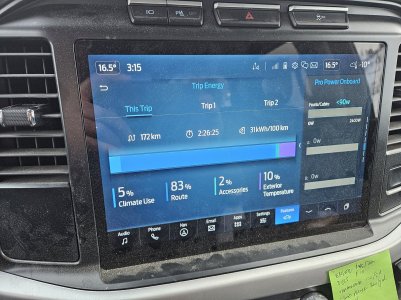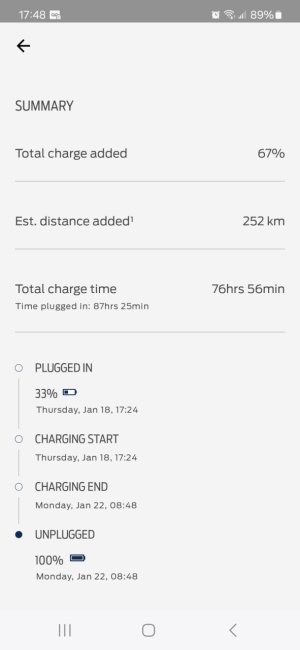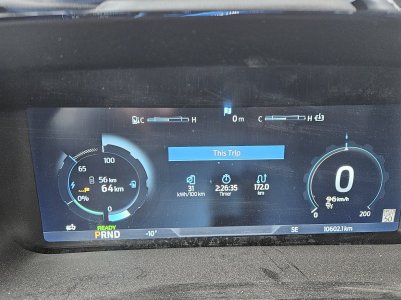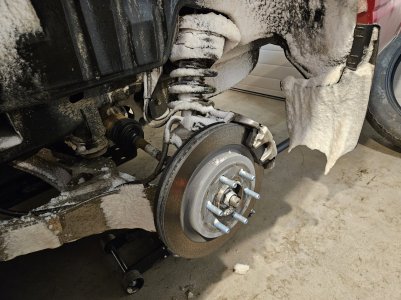Observations from the trip to Sun Peaks:
- 16-18% of energy used in non-driving functions (battery temp control, climate control, heated seats) in -10 C conditions.

- 120V charging is reliable but slow, adding 70 kWh took 76 hours. Guess I owe my buddy $8.

- battery preconditioning and cabin warming work fine when plugged into 120V
- Lightning protects its battery more aggressively in cold weather by throttling back the amount of power available as range is depleted. Arriving at the charger in Kamloops still with 56 km left nonetheless had me down to 65% of full power available. I think this is a deliberate strategy of Ford's to protect owners from themselves. Other brands deliver full or near-full power until suddenly hitting "turtle mode" when very close to empty battery. Ford slowly reduce power so that aggressive or fast driving doesn't result in an empty battery out on the road somewhere. In more modest temps, I'd have about 80% available with 50+ km to go.

- using the Ford navigation system to enter a route with charging included is said to cause the BMS to precondition itself ready to accept fast charge; ie; battery heats up, but according to the little battery temp slide gauge (top left of pic above), it's still at its optimum temp for driving.
- switching to an all terrain tire (Hankook) didn't appreciably increase cabin noise or rolling resistance.
Good trip for the truck, it handled the 20 cm sloppy wet snow that fell all during my stay without dramas. Energy use/range loss in colder weather was quite acceptable, and it remains a superbly comfortable highway vehicle. The lack of engine noise and vibration really make it a better ride.




